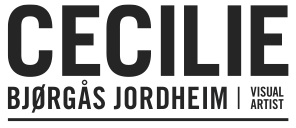Musique concrète is music made by real sounds from everyday life. The compositional material in Musique concrète is not bound up to sounds performed by musical instruments or elements that traditionally is looked upon as "musical" i.e melody, harmony, rythm etc.
The theoretical grounds of Musique concrète was made by Pierre Schaeffer in the 40s. The Musique concrète composers of the 40s had great knowledge about the media of radio and was using the magnetic tape in their compositions.
Walter Ruttman (1887 -1941) was the first person to create the first film without visual elements in 1928 with the piece made by optical sound entitled "Weekend".
The sound piece is a 11 minute sound montage that describes a journey to the countryside; The train leaves the city of Berlin and ends up in a soundwise calmer rural area.
In "Weekend" he cut and spliced together elements of optical sound long before the magnetic tape was invented. This was later referred to as "Cinema pour l'oreil" (cinema for the ears), a term derived from the accusmatic principal by Pythagoras meaning music created by the ears where you can not see the actions behind the sounds.
By including the word "cinema" one seem to move in the direction of the narrative sphere where impressions from the eye, narrative or abstract, matter.
In order to sustain the autonomy of the film or sound, it is interesting how the elements of narrativity and the piece it self, is being separated from each other. Where is the point where abstract/autonomous film and sound is moving towards something figurative/narrative, and are these contradictions sustainable when it comes to narrativity? Where does narrativity meet plain formalism and the other way around? Where does this collide?
Like in Ruttmans "Weekend" a journey or a voyage can be movement in representational or abstract distances. A journey kan appear in sound, in time or in a story in a movie, theater or literature.
The main element in the project I'm working with now, POLARSTAR, is the reading of typography and topography. I want to hear the sound that appears when following a map in optical sound. It is the visual representation of the map and the landscape that creates the sound you hear -the real and direct sound of a geographical spot or a journey.

The title POLARSTAR also gives an entry to a far bigger narrative -a specific time, a specific voyage, a specific distance.
The theoretical grounds of Musique concrète was made by Pierre Schaeffer in the 40s. The Musique concrète composers of the 40s had great knowledge about the media of radio and was using the magnetic tape in their compositions.
Walter Ruttman (1887 -1941) was the first person to create the first film without visual elements in 1928 with the piece made by optical sound entitled "Weekend".
The sound piece is a 11 minute sound montage that describes a journey to the countryside; The train leaves the city of Berlin and ends up in a soundwise calmer rural area.
In "Weekend" he cut and spliced together elements of optical sound long before the magnetic tape was invented. This was later referred to as "Cinema pour l'oreil" (cinema for the ears), a term derived from the accusmatic principal by Pythagoras meaning music created by the ears where you can not see the actions behind the sounds.
By including the word "cinema" one seem to move in the direction of the narrative sphere where impressions from the eye, narrative or abstract, matter.
In order to sustain the autonomy of the film or sound, it is interesting how the elements of narrativity and the piece it self, is being separated from each other. Where is the point where abstract/autonomous film and sound is moving towards something figurative/narrative, and are these contradictions sustainable when it comes to narrativity? Where does narrativity meet plain formalism and the other way around? Where does this collide?
Like in Ruttmans "Weekend" a journey or a voyage can be movement in representational or abstract distances. A journey kan appear in sound, in time or in a story in a movie, theater or literature.
The main element in the project I'm working with now, POLARSTAR, is the reading of typography and topography. I want to hear the sound that appears when following a map in optical sound. It is the visual representation of the map and the landscape that creates the sound you hear -the real and direct sound of a geographical spot or a journey.

The title POLARSTAR also gives an entry to a far bigger narrative -a specific time, a specific voyage, a specific distance.
